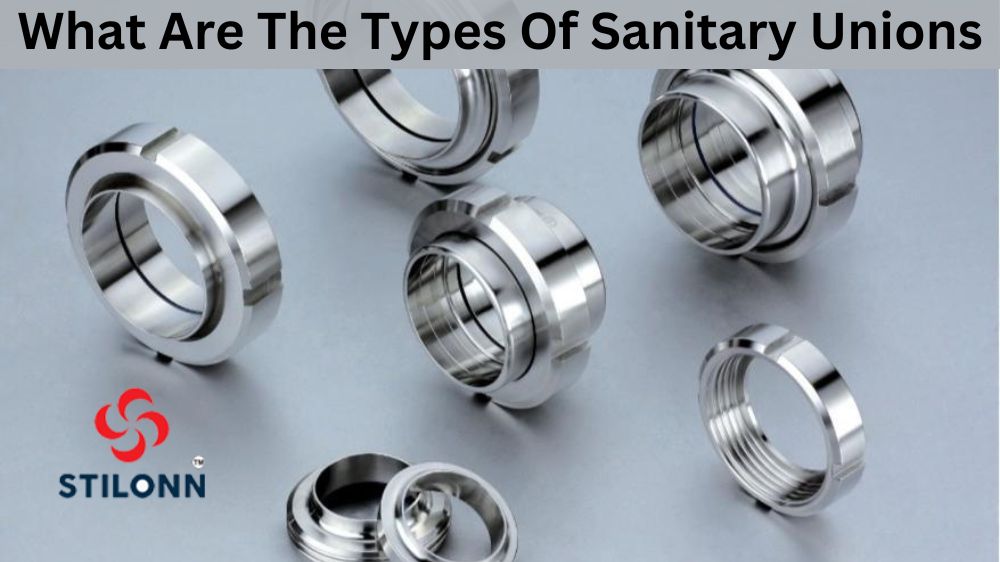A secure and hygienic connection between pipes and equipment is essential for manufacturing industries and sanitary applications. One of the popular solutions is to use Sanitary Unions, designed to eliminate the chances of leaks, contamination, and cleaning problems. There are different types of sanitary unions, and choosing the right one for your application is crucial for hassle-free operations, minimal maintenance, and maximum efficiency. In this blog post, we’ll guide you through the different types of sanitary unions and help you understand their features, benefits, and applications.
What is Sanitary Unions?
Sanitary Unions are a trade union formed in the early twentieth century to represent, lobby, and support sanitation workers. This includes waste collectors, street cleaners, road sweepers and other related occupations. These unions sought better wages, improved working conditions for members, and higher safety standards in an often dangerous industry due to hazardous chemicals or materials handled by workers. The formation of such unions has been instrumental in raising awareness for sanitation worker rights and allowing their voices to be heard by governments worldwide.
Types Of Sanitary Unions
Clamped Sanitary Union
The clamped sanitary union is the most commonly used in the food, beverage, pharmaceutical, and biotech industries. It consists of a clamp, a gasket, and two ferrules that attach firmly to the pipe ends. The clamp allows for easy installation and removal of the union, which is essential for cleaning and maintenance. The gasket provides a seal between the pipes, ensuring no leaks or contamination. This type of union is versatile, cost-effective, and suitable for frequent disassembly applications.
Threaded Sanitary Union
The threaded sanitary union is designed to connect pipes with threaded ends securely. It consists of a female threaded end, a male threaded end, and a gasket that provides a tight seal against contamination. It is commonly used in low-pressure applications, where frequent disassembly is unnecessary. Although it is more challenging to install or remove than the clamped sanitary union, it is still a popular choice for certain applications, such as water and air supply.
Flanged Sanitary Union
The flanged sanitary union is typically used in applications that require high-pressure connections. It consists of two flanges, a gasket, and bolts holding them together. The flanges can be either raised face or flat face, and they attach to the pipe ends with the help of bolts. The gasket provides a secure seal between the flanges, ensuring no leaks or contamination. This union type is commonly used in chemical, petrochemical, and oil and gas industries.
Welded Sanitary Union
The welded sanitary union is designed for permanent and hygienic connections between pipes. It consists of two pipe ends that are welded together, eliminating any chances of leaks or contamination. This union type is commonly used in applications that work under high-pressure or high-temperature conditions. It provides a seamless and smooth connection, ensuring no crevices or areas can trap food particles or bacteria. Welded sanitary unions are ideal for dairy, breweries, and other applications where hygiene is critical.
PTFE Lined Sanitary Union
The PTFE-lined sanitary union is designed to handle highly corrosive and aggressive chemicals. It consists of a PTFE-lined pipe end and a non-lined pipe end. The PTFE lining provides excellent chemical resistance, ensuring the union does not rust or degrade over time. It is commonly used in the pharmaceutical and chemical industries, where harsh chemicals are used in processing or storage.
Conclusion
Choosing the right type of sanitary union is essential to ensure hygienic and efficient operations in the manufacturing industry. Clamped unions are versatile and cost-effective, threaded unions are suitable for low-pressure applications, flanged unions are ideal for high-pressure applications, welded unions provide permanent connections, and PTFE-lined unions are needed for highly corrosive applications. By understanding the different types of sanitary unions and their applications, you can choose the right union for your process piping needs, ensuring maximum performance and minimal maintenance.




